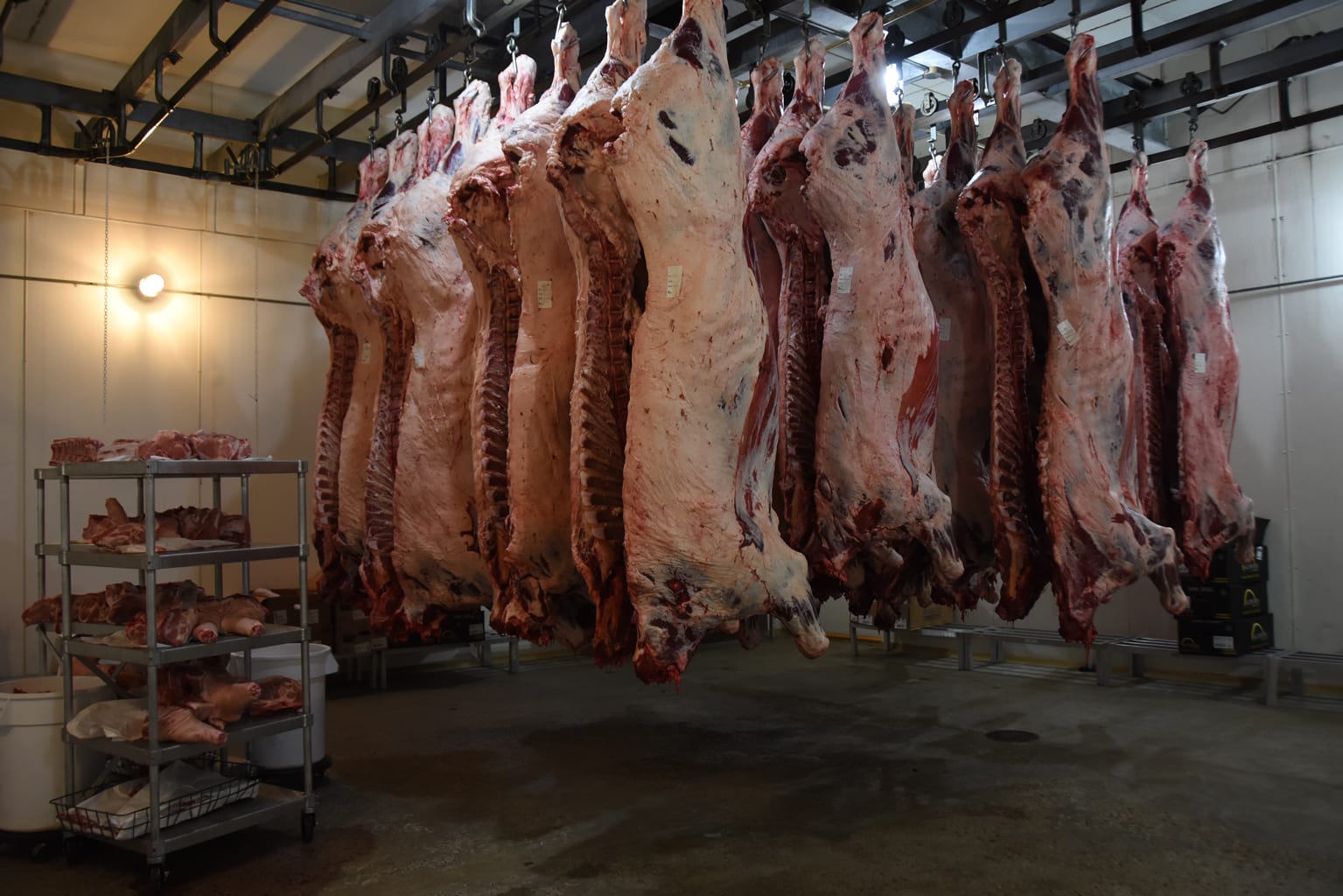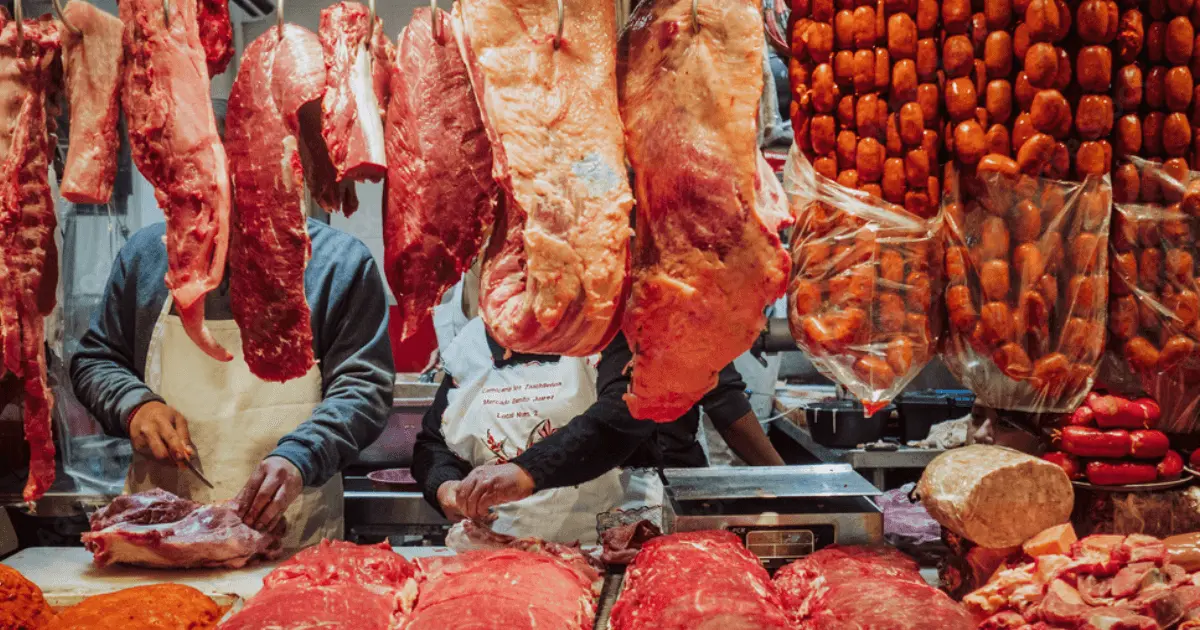Bagley Farms Meat Market Edwardsville IL: Your Go-To Destination for Regional Meat Choice
Bagley Farms Meat Market Edwardsville IL: Your Go-To Destination for Regional Meat Choice
Blog Article
Discover the Art of the Butcher's Cut in a Modern Meat Market
In the ever-evolving landscape of modern-day meat markets, the butcher's cut has transcended its typical roots, combining olden workmanship with contemporary methods. What truly establishes the modern butcher apart is their capability to build a much deeper link between customers and the beginnings of their meat.
Development of Butchery Strategies

The mid-20th century saw butchery methods even more fine-tuned by scientific understandings right into muscle mass biology and meat aging, enhancing both inflammation and preference. Developments like vacuum product packaging and refrigeration prolonged product shelf-life, permitting butchers to expand offerings and enhance quality assurance. This duration likewise marked the surge of specific equipment, such as band saws and meat slicers, which raised precision and efficiency in meat handling.
Computerized systems now assist in tracking animal provenance and maximizing cuts to meet certain consumer preferences. In addition, a resurgence in artisanal butchery has arised, blending conventional abilities with modern knowledge to provide to customers seeking ethical and lasting meat alternatives.

Understanding Meat Cuts

Understanding the intricacies of meat cuts is vital for both butchers and customers seeking quality and worth. Each cut originates from a different part of the pet, giving distinct flavors, appearances, and cooking methods. Proficiency of these differences not only boosts culinary experiences yet additionally makes best use of the energy of each carcass. For butchers, accurate cuts mirror ability and respect for the craft, making certain very little waste and optimum return.
The primary classifications of meat cuts consist of primal, sub-primal, and retail cuts. Butchers after that damage these down even more right into sub-primal cuts, prior to finally creating retail cuts readily available to consumers, like ribeye or tenderloin.
Comprehending muscular tissue composition is important; muscular tissues used much more regularly by the pet tend to be tougher and are best fit for slow-moving food preparation methods, while less-used muscle mass, like those discovered in the loin, are extra tender and ideal for grilling or roasting. Familiarity with these distinctions equips customers to make enlightened selections, enhancing their culinary endeavors.
Selecting Quality Meat
Picking the best meat involves even more than just selecting a visually appealing item from the screen. see here now The art of selecting high quality meat requires a critical eye and understanding of specific qualities that represent quality and quality.
Secondly, think about the marbling, which refers to the white streaks of fat within the muscle. Correct marbling is an essential indication of tenderness and taste, as it melts throughout cooking, improving the meat's juiciness. Remember, greater marbling frequently associates with premium top quality cuts, such as USDA Prime.
Texture is one more important aspect; meat should really feel solid to the touch, not slimed or overly soft. In addition, bear in mind the scent. Fresh meat ought to have a tidy, neutral smell, without any type of sour or repulsive odors.
Combining Cuts With Food Preparation Methods
Effectively combining cuts of meat with the ideal food preparation approaches is essential for achieving optimal flavor and texture. These techniques improve the meat's natural flavors and guarantee a juicy surface.
On the other their website hand, tougher cuts like brisket and chuck roast are rich in collagen, which breaks down into jelly when prepared gradually. These cuts are excellent for braising or slow-moving roasting, permitting the meat to soften gradually and establish deep, complicated flavors. In a similar way, cuts such as brief ribs and pork shoulder make out well with slow-cooking methods, where expanded cooking times change their durable structures into delicious recipes.
Lamb shanks and oxtail, which require prolonged food preparation to tenderize, are ideal candidates for cooking or sluggish simmering. These methods coax out abundant, passionate flavors while keeping dampness. By comprehending the distinct characteristics of each cut, cooks and home cooks alike can elevate their cooking creations, guaranteeing each recipe is both pleasing and memorable.
The Butcher's Duty Today
Navigating the evolving landscape of the modern-day meat market, the butcher's role today expands beyond plain prep work of cuts. Contemporary butchers are culinary craftsmens, educators, and supporters for sustainable techniques. They bridge the void between the ranch and the fork by guaranteeing moral sourcing, comprehending pet husbandry, and prioritizing openness in the supply chain. This shift mirrors the growing customer demand for top quality over quantity, where provenance and pet welfare are vital.
In addition to crafting exact cuts, butchers currently involve directly with clients, offering cooking recommendations and customizing selections to fit specific demands and preferences. Their proficiency in meat aging, marbling, and taste accounts encourages consumers to make educated choices, boosting their cooking experiences. This customized service exhibits the butcher's advancing role as a trusted consultant in the kitchen area.
In addition, butchers are pivotal in reducing waste, using entire pets to develop varied items such as sausages and supplies - bagley farms meat market edwardsville il. This thorough approach not only respects the animal but likewise lines up with contemporary sustainability goals. In this method, the modern-day butcher personifies both practice and technology, adjusting to an ever-changing market while maintaining the virtuosity and stability of their craft

Final Thought
The contemporary butcher's craft intricately weaves typical methods with modern technologies, highlighting lasting methods and ethical sourcing. Proficiency in understanding varied meat cuts and quality indications empowers butchers to give educated referrals, lining up specific cuts with ideal food preparation techniques. This proficiency not just elevates cooking experiences but likewise site web reinforces the connection in between consumers and the beginnings of their food. By honoring historical techniques while embracing modern demands, the butcher's function continues to be important in today's innovative meat market.
Report this page